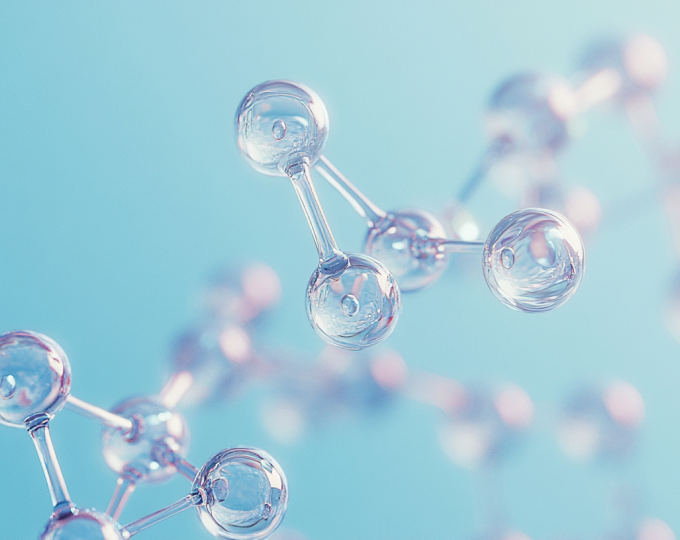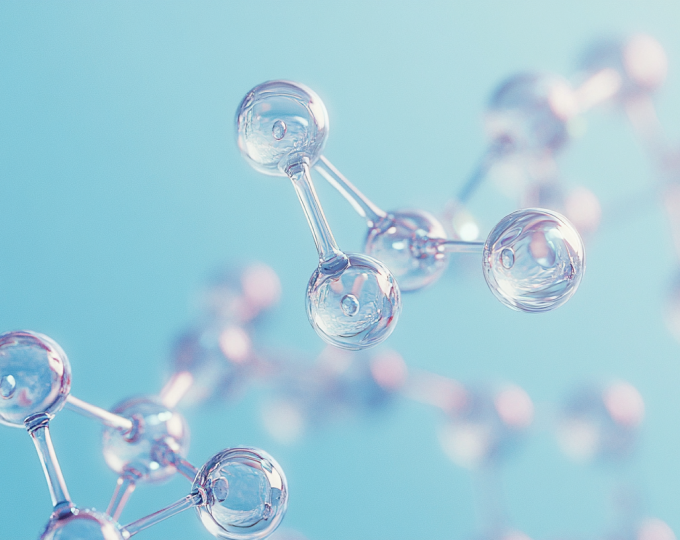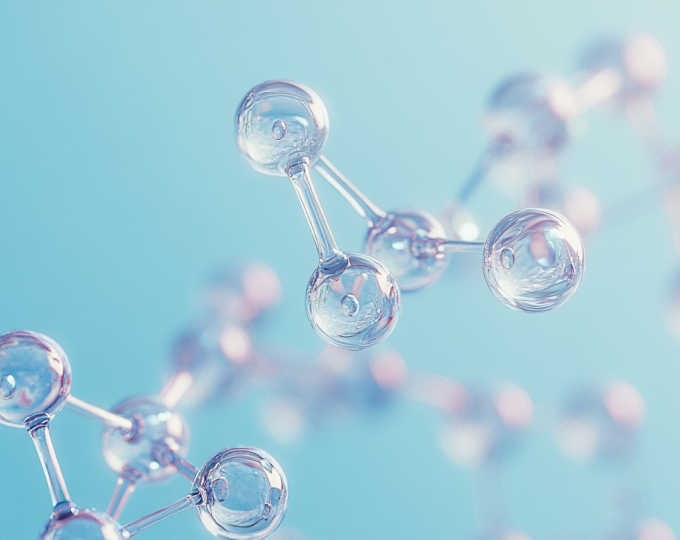Themen dieses Blogartikels:
Table of contents
- Exhausted, unbalanced, stressed? Why classic nutrition is often not enough.
- Between the Smoothie Craze and Protein Overload: The Search for Balance
- Knowledge from studies & consumer protection agencies
- Strain on kidneys, metabolism & well-being - all risks of too much protein
- Symptoms of Amino Acid Deficiency: Recognizing the Body's Warning Signals
- Possible risk groups: Who should pay particular attention to their amino acid balance
- Amino acids as key building blocks – but suited to the body.
- When "non-essential" suddenly becomes indispensable.
- The blueprint within us: What the human genome reveals about our needs.
- Learn from your genetic code: Your customized amino acid needs.
- Precision nutrition instead of one-size-fits-all solutions: The path to smarter care.
- Interactions with other nutrients: How amino acids work together in teamwork
- Less is more: When the tailor-made amino acid mix achieves more than a protein explosion.
- Conclusion: Provide smarter care, offer more targeted support – and take the body seriously.
- Sources & Bibliography
Do you often feel tired and drained, even though you actually eat a healthy diet?
Amino acids form the basis of all proteins and consist of a characteristic chemical structure containing an amino group and other functional amino groups, which are crucial for the formation of peptide bonds and biochemical reactions. They act as essential components and building blocks of proteins and other biological molecules. As building blocks of proteins, amino acids are central to the structure and function of the body, including tissues, bones, and the immune system. Their importance extends to health, metabolism, and numerous physiological processes.
Amino acids are also important components of protein-rich foods such as meat, fish, dairy products, eggs, whole grains, and legumes, and provide essential nutrients that the body cannot produce itself. They play a significant role in the immune system and immune defense by participating in the formation of antibodies and the defense against pathogens. Furthermore, amino acids are involved in numerous biological processes and, as information carriers, play an important role in information transfer within the cell.
In short: What are amino acids and why are they so important?
Amino acids are the fundamental building blocks of life – without them, practically nothing happens in the human body. They form the basis for all proteins, which in turn are responsible for the building up, repair, and function of our tissues. Whether muscles, skin, or bones: proteins and thus amino acids are involved everywhere. In total, there are 20 proteinogenic amino acids that our body needs to produce its own proteins. Of particular importance are the eight so-called essential amino acids: L-Leucine , L-Isoleucine , L-Lysine , L-Methionine , L-Phenylalanine , L-Threonine , L-Tryptophan , and L-Valine . Our body cannot produce these essential amino acids itself – they must be supplied daily through food. They are not only crucial for the building up and repair of muscles, skin, and bones, but also play a central role in the formation of hormones, enzymes, and other vital molecules. Without a sufficient supply of these building blocks, many processes in the body come to a standstill – from muscle regeneration to hormone production. Therefore, it is so important to ensure a balanced intake of amino acids in the diet.
Exhausted, unbalanced, stressed? Why classic nutrition is often not enough.
A stressful daily life with little rest and high performance pressure takes its toll on body and nerves. You feel the consequences yourself: constant fatigue, a weakened immune system or tense muscles are warning signs. While proteins from daily food are the basis of our own body substance, the supply is often not precisely enough tailored to our individual needs.
Protein deficiency – meaning your body lacks essential amino acids – can lead to physical weakness, impaired immune function, and other problems¹ . Since a large part of muscles, cells, and tissues consist of amino acids, the body resorts to its own reserves in case of deficiency, which in the long term depletes substance and well-being. Why is "normal eating" sometimes not enough? On the one hand, chronic stress increases the need for certain nutrients and can disrupt their utilization. On the other hand, protein is not just protein: the quality and composition of the ingested amino acids play a major role. Our DNA and metabolism are as individual as a fingerprint – it is therefore logical that the need for amino acids also varies from person to person.
Classical nutritional recommendations provide general guidelines, but hardly take individual differences into account. What is enough for one person may already be too little or inappropriately composed for another. The consequence: Despite seemingly sufficient protein intake, one feels weak, unbalanced and stressed. This is where the new approach comes in, which considers the individual and uses amino acids more intelligently to close these gaps.
New approaches in nutritional science increasingly focus on the administration of 20 proteinogenic amino acids – regardless of their classification as essential or non-essential. Certain amino acid compositions are based on the average protein composition in the human body or on the genetic blueprint (exome) .
Between the Smoothie Craze and Protein Overload: The Search for Balance
In the world of nutrition, extremes often clash. On the one hand, health blogs invite us to eat more naturally with superfood smoothies and vegan bowls – which is generally positive, but can sometimes lead to a lack of important protein components. On the other hand, there's the protein hype , which is widespread, especially in the fitness sector: protein shakes, bars, and XXL steaks, as if there were no such thing as too much. Both approaches can become unbalanced. While a purely plant-based smoothie diet risks neglecting essential amino acids, a blanket protein overload quickly leads to an oversupply that does more harm than good. What many don't know: "more helps more" only applies to proteins up to a certain point. Those who are already adequately supplied have no extra benefit from additional protein – except perhaps for more expensive urine.

Knowledge from studies & consumer protection agencies
Studies and consumer analyses show that a normal, balanced diet usually provides all amino acids in sufficient quantities , making extra powders or pills unnecessary². Even ambitious athletes can often easily cover their increased protein needs through natural foods². An excess of protein is not transformed by the body into endless mountains of muscle, but is either burned as energy or – in excess – stored as fat. The trick is to find the balance : enough protein and amino acids to be optimally supplied, but not unnecessarily in excess. Many health-conscious people want a more targeted, efficient nutrient intake instead of blanket recommendations. This means: neither blindly gulping down every trendy smoothie nor chugging a third protein shake daily, but supplementing according to needs . This is where smart amino acid supplementation comes into play, providing the building blocks your body really needs – in the right dosage.
In certain life situations or with increased needs, such as during intensive sports activities or health restrictions, nutritional supplements can be useful to specifically compensate for a deficiency of amino acids.
Strain on the kidneys, metabolism and well-being - all risks of too much protein.
The downside of the uncontrolled protein hype is potential health risks. Many who aren't "muscle freaks" are skeptical of high protein intake – and for good reason. A persistently excessive protein intake can strain the metabolism.¹⁰
The processing of excess protein leads to an increased amount of urea, which must be excreted by the kidneys. Those who are constantly in protein overdrive put their kidneys under stress and must ensure they drink extremely large amounts of fluids to support detoxification.² People with already impaired kidney function should be particularly careful, as too much protein can further worsen kidney function. While for healthy adults, a protein intake of up to about twice the recommended amount is considered harmless², anything beyond that is in a grey area – science cannot rule out negative effects from extreme oversupply.²
The motto, therefore, is: Don't overdo it. Your body can best utilize a moderate, targeted protein intake. Less is sometimes more , especially when "less" means supplying exactly what's needed in the right amount, instead of flooding the body with excess.
Symptoms of Amino Acid Deficiency: Recognizing the Body's Warning Signals
A deficiency in amino acids, especially essential amino acids, can manifest in a variety of ways. Typical symptoms include persistent fatigue, general weakness, hair loss, brittle nails, and skin problems. A weakened immune system can also indicate a lack of essential amino acids. A deficiency is particularly critical for muscle mass: without sufficient essential amino acids, the body cannot build new muscle, and existing muscle mass is lost. Bone health also suffers, as proteins and their building blocks are essential for bone stability and repair. Anyone experiencing such symptoms should monitor their amino acid intake and take targeted measures if necessary.
Possible risk groups: Who should pay particular attention to their amino acid balance
Not everyone is equally at risk of an amino acid deficiency. However, certain groups should pay particular attention: athletes who have an increased need due to intensive physical exertion, people with an unbalanced diet, older people whose metabolism changes, and people with certain diseases such as diabetes or cancer. Those who are frequently stressed should also ensure an adequate supply of amino acids, as stress can further increase the need. For all these people, it is particularly important to maintain a balanced diet and regularly check their own amino acid balance to prevent deficiencies.

Amino acids as key building blocks – but suited to the body.
Amino acids are the key building blocks of life. Our bodies use them to assemble proteins, and these proteins perform countless functions. Muscles, skin, bones, enzymes, hormones, antibodies – all of these are proteins or contain protein components that cannot be built without amino acids. Dietary proteins primarily supply us with the essential amino acids (those we cannot produce ourselves) and nitrogen for the synthesis of the remaining proteins in the body.⁴ This is how structural proteins like actin and myosin in muscles, transport proteins like hemoglobin in the blood, immunologically active proteins like antibodies, numerous enzymes, messenger substances, and even our DNA/RNA, which require amino acids as building blocks, are created.⁴ Furthermore, various amino acids serve as starting materials for important molecules – for example, the neurotransmitter serotonin is formed from tryptophan, or the signaling molecule histamine from histidine.⁴ In short: Without amino acids, nothing works in the human organism.
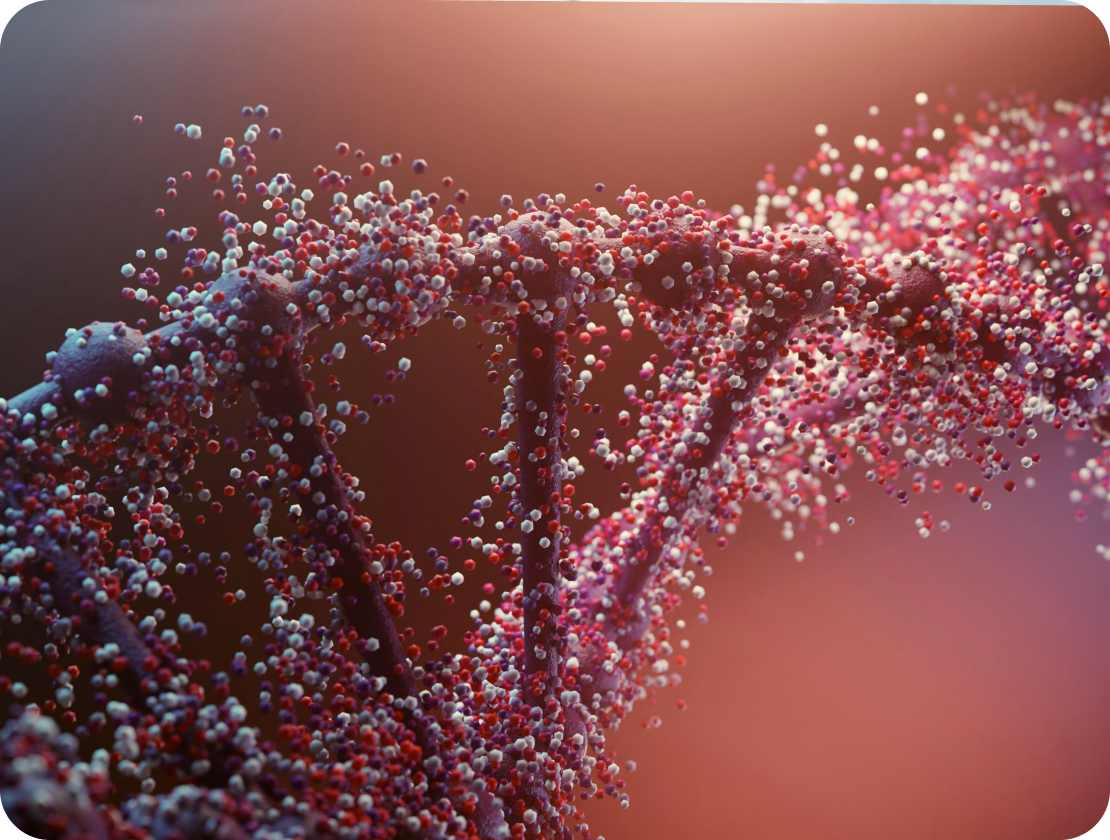
When "non-essential" suddenly becomes indispensable.
However, not all amino acids are created equal . Classical teaching distinguishes between essential (life-sustaining, requiring external supply) and non-essential amino acids (the body can produce them itself). But this simple dichotomy is too simplistic. Many of the so-called "non-essential" amino acids are actually essential in certain situations. They are referred to as semi-essential or conditionally essential. For example, while the body can produce arginine itself, in stressful situations, injuries, or during growth, the body's own production is often insufficient to meet the demand⁵. The same applies to glutamine , which is extremely important for the immune system during prolonged stress. L-glutamine in particular is often used as a dietary supplement because it plays a central role in regeneration, muscle building, and sports nutrition. In recent years, science has recognized that the strict classification into essential vs. non-essential has significant conceptual gaps.⁵ Some amino acids traditionally classified as "non-essential" actually play key regulatory roles in metabolism and are just as important for optimal health and performance.⁵ Furthermore, especially during certain life phases (e.g., growth phases, pregnancy, or old age) and during illness/stress, the demand for some "self-produced" amino acids can exceed the body's own production capacity.
The new perspective therefore is: All amino acids are important , and a needs-based supply of all building blocks is crucial. The focus shifts from the question "Which amino acids do I have to eat?" to "Which and how many amino acids should I eat to optimally support my body?". In an ideal diet, both essential and previously non-essential amino acids are supplied in the right proportions.⁵ This balanced profile – sometimes referred to as the "ideal protein" concept – is intended to ensure that the body receives all the necessary building blocks without excess or deficiency . This is precisely the idea behind smart amino acid supply: not blindly consuming large amounts of protein, but purposefully supplying the right amino acids in a needs-based manner .
The blueprint within us: What the human genome reveals about our needs.
Every one of our cells contains a blueprint – our DNA. The part of the DNA that codes for proteins is called the exome . The exome can be imagined as a gigantic cookbook containing all the recipes for the body's own proteins. Each of these recipes also lists the required "ingredients," i.e., the amino acids, in a specific order. The genetic coding in the exome precisely determines the sequence in which the proteinogenic amino acids are arranged in the proteins. The interesting question is: Which amino acids and in what frequency actually occur in our body? This question provides clues about what our organism really needs. For example, collagen , the most abundant protein in our body (it forms connective tissue, skin, and bones), consists largely of the amino acids glycine, proline, and hydroxyproline. In fact, glycine, proline, and hydroxyproline alone account for a whopping 57% of the amino acids in collagen⁶ – and collagen in turn represents about one-third of the total protein mass in the body.⁶
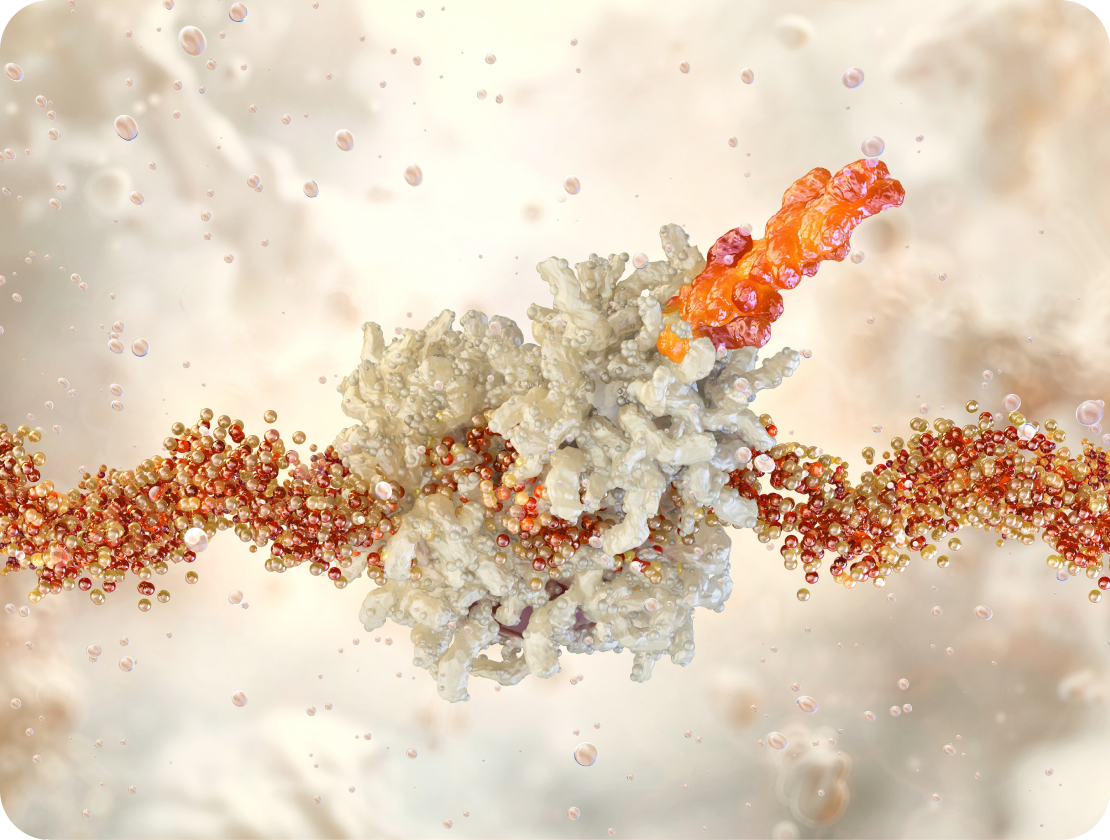
This means: Glycine is one of the most commonly used amino acids in your body . You need plenty of glycine for smooth skin, stable joints, and healthy connective tissue. While the body does produce glycine itself, it only does so up to a certain amount. Recent studies show that the body's own glycine synthesis is insufficient to build maximum collagen or, for example, to achieve optimal growth in animal models.⁶ Therefore, nutrition must support this with glycine sources (e.g., gelatin, bone broth, or targeted supplements).
However, it's not only amino acids that play a central role – nucleotides are also indispensable. They form the molecular basis of our DNA and RNA – the information storage and blueprint for every cell and every protein. Whenever cells divide, repair, or are newly formed (e.g., after exertion, injury, or chronic stress), the need for nucleotides increases. Tissues with a high cell turnover rate, such as muscles or regenerating joint structures, particularly benefit from targeted supply. In combination with an intelligently composed amino acid profile, nucleotides can thus play a key role – as "building helpers" at the cellular level.
Exogenous amino acids – Different approaches for optimal supply
The supply of amino acids is a central building block for health and performance. While many approaches focus on essential amino acids, there are also concepts that aim for a more comprehensive supplementation of your amino acids .
This holistic approach takes into account that individual metabolism, in its ability to produce non-essential amino acids, can vary due to environmental influences, genetic and epigenetic factors. Enzymatic differences and personal metabolic imperfections can play a role in this.
Both approaches – the targeted supplementation of essential amino acids and the expanded supply of all amino acids – contribute in different ways to efficient protein synthesis and optimal nutrition.
Advertisement
- 20 amino acids, supplemented by a nucleotide complex – tailored to your genetic blueprint.
- High bioavailability due to pre-enzymatically hydrolyzed amino acids.
- Exom Match: Our composition is based on the protein structure of your body.
- Neutral in taste & versatile in use
- Human Amino Acid Signature – for specific composition & innovation

Learn from your genetic code: Your customized amino acid needs.
This principle can be applied to many amino acids. Our genetic blueprint reveals that some amino acids are incorporated much more frequently than others. For example, leucine or serine are relatively common in average proteins (approximately 7–8% of the amino acids in body proteins each), while tryptophan, with less than 1%, is rather rare⁷. This leads to the conclusion: Our body needs leucine and others in significantly larger quantities than tryptophan – simply because many structures are constantly being built or renewed with them. A diet based on the "watering can" principle, which delivers all amino acids unspecifically and equally, therefore does not perfectly match the actual needs pattern. Instead, the idea of "precision nutrition" comes into play: If we know which amino acids are particularly in demand according to our genetic blueprint, we can tailor our intake accordingly. An example of this is L-tyrosine, which plays an important role in the production of hormones and neurotransmitters and thus significantly contributes to mental performance.

Another aspect of the exome is individuality . Small genetic differences can influence how efficiently we produce or utilize certain amino acids. For example, there are genetic variants that slow down the synthesis of amino acids or increase the need for them. The blueprint of each person therefore also provides a kind of personal profile. In the future, genetic tests could be used to determine individual strengths and weaknesses – and to tailor the amino acid mix accordingly (Precision Nutrition). This is still a vision for the future for everyday use, but the scientific basis for it is currently being laid through an ever-better understanding of our proteome (all proteins) and genome. In summary, our internal blueprint teaches us: It's not only important that we eat proteins, but which amino acids are contained in what quantity. This new science provides exciting starting points to adapt nutrition much more precisely to the real needs of our cells.
Precision nutrition instead of one-size-fits-all solutions: The path to smarter care.
In light of all this knowledge, a paradigm shift is emerging: away from blanket solutions, towards precision nutrition . This term – analogous to precision medicine – stands for an individual approach to optimal nutrition for each person. "One size fits all" is a thing of the past; modern nutritional research emphasizes that while general standard recommendations are simple, they can miss the mark. In fact, scientists are increasingly finding that nutritional recommendations need to be fundamentally questioned because interindividual differences have a significant impact⁸. This paves the way for personalized approaches – especially with amino acids, where needs and benefits depend heavily on factors such as genetics, lifestyle, and health status. What does this mean concretely for your amino acid supply? No more maximum doses based on the motto "more is better," but targeted support at the right time. Do you have a stressful job and feel mentally exhausted? Then certain amino acids (e.g., tyrosine or tryptophan) could be helpful, as they serve as precursors to dopamine and serotonin, respectively, and influence mood and focus. Are you physically active and want to regenerate optimally without overstraining your body? Then it's smarter to give it a balanced amino acid mix after training, instead of simply consuming 100g of protein indiscriminately. Amino acids can be specifically used in the form of capsules or other dietary supplements as practical products for muscle building and regeneration. Such a targeted mixture can efficiently stimulate muscle protein synthesis (especially through leucine and its companions) and at the same time ensure that building blocks for immune cells and enzymes are also available, which are needed more in the regeneration phase.
Interactions with other nutrients: How amino acids work together in teamwork
Amino acids never work alone in the body – they depend on interaction with other nutrients to optimally fulfill their diverse functions. A good example is vitamin B6, which is essential for the metabolism of many amino acids. Minerals and trace elements such as zinc or magnesium also support the utilization and incorporation of amino acids into the body's own proteins. The combination of amino acids with carbohydrates and fats can also improve absorption and utilization in the body. Therefore, a balanced diet that provides all important nutrients is the best basis for amino acids to unfold their full effect. Only through teamwork with other nutrients can they optimally fulfill their role as building blocks, regulators, and supporters of health, performance, and well-being.
Less is more: When a tailor-made amino acid mix achieves more than a protein explosion.
An impressive example from sports medicine: A study with professional athletes showed that individualized amino acid supplementation significantly improved physical and mental balance⁹. Even in already well-trained and well-nourished athletes, targeted amino acid supplementation led to an improvement in heart rate variability – a measure of stress resistance and recovery ability. Specifically, a parasympathetic parameter (pNN50) increased, while stress indices decreased⁹. The athletes slept better, could concentrate better, and felt more balanced – all with a tailored, small amount of extra amino acids in the right ratio⁹. This result clarifies: With the right mix in the right amount, more can be achieved than with a brutal overdose of protein. Individualized amino acid supplementation also supports the maintenance of muscle mass and other important bodily functions, especially in special circumstances or increased needs. The basic idea of precision nutrition is therefore " less is more – provided it's the right thing ". Instead of taking in as many nutrients as possible on a hunch, you give your body exactly what it needs. This conserves resources – your body no longer has to expend effort disposing of surpluses – and you feel better because your organism can work in balance. In everyday life, this means: Thoughtful supplementation can, for example, support mental performance on long working days without stressing you. Or it helps you recover faster after sports without having to eat huge amounts of extra calories.
Precise amino acid supply takes all areas of life into account: work, regeneration, sleep, immune system, mental strength. It's not about short-term boosters, but about intelligent nutrient management that makes you stronger in the long run – from the inside out. And the beauty of it is: You take your body seriously, listen to its signals and support it precisely, instead of just giving it general "health advisor tips".
Conclusion: Provide smarter care, offer more targeted support – and take the body seriously.
The conclusion is clear: amino acids are the key, but they have to fit the lock. Instead of mindlessly shoveling protein into yourself or rigidly following outdated food pyramids, a smarter approach is worthwhile. Focus on the right nutrients instead of oversupply. Your body will thank you – with more energy, better regeneration and increased well-being instead of a health burden. Modern science is showing new ways of what exome-based amino acid supply could look like: personalized, precise and effective. This smart approach takes you as an individual seriously, instead of forcing you into a rigid scheme. Concretely, this means for you: listen to your body and find out which amino acids exactly suit your goals and needs . You might need a different mix than your best friend or colleague – and that's perfectly okay. With the right knowledge (and professional advice if needed), you can fine-tune your diet. The goal is to achieve more with less : an optimally supplied body that is efficient, recovers well and in which you feel completely comfortable.
More power through smart amino acids is not just a slogan, but an invitation to rethink nutrition – scientifically sound and individually tailored. Embark on your journey to personal balance: your body already has the blueprint, now it's up to you to provide it with the right building blocks. With this holistic, needs-based approach, you strengthen your daily energy, promote sustainable well-being, and treat your body as it deserves: with respect and intelligent support.
This article is based on carefully researched sources:
bibliography
- Wu G. Dietary protein intake and human health. Food & Function. 2016;7(3):1251-1265. DOI:10.1039/c5fo01530h (PMID: 26797090)
- Consumer Advice Center. Extra dose of amino acids – unnecessary in recreational sports. (2021). (accessed on 09.07.2025).
- World Health Organization (WHO). Q&A: Carcinogenicity of the consumption of red meat and processed meat. (2015).
- German Nutrition Society (DGE). Selected questions and answers about protein – Why does the body need protein? (2021). Available online.
- Wu G. Functional Amino Acids in Growth, Reproduction, and Health. Advances in Nutrition. 2010;1(1):31-37. DOI:10.3945/an.110.1008 (PMID: 22043449)
- Li P, Wu G. Roles of dietary glycine, proline, and hydroxyproline in collagen synthesis and animal growth. Amino Acids. 2018;50(1):29-38. DOI:10.1007/s00726-017-2490-6 (PMID: 28929384)
- NIMBioS. Amino Acid Frequency in Vertebrate Proteins (data module). National Institute for Mathematical and Biological Synthesis. (Accessed July 9, 2025) – Observed frequency of Leucine ~7.6% vs. Tryptophan ~1.3% in proteins.
- Burgstaller M. et al. Personalized nutrition as a future model – Precision nutrition in focus. J. for Gastroenterological and Hepatological Diseases. 2022;10:22-28. DOI:10.1007/s41971-022-00136-x
- Wienecke E. & Herbst R. Amino acids – targeted intake and effects on the autonomic nervous system. Sportärztezeitung. Issue 02/2019, pp. 12-15. Available online. (Accessed on 09.07.2025).
- Federal Institute for Risk Assessment (BfR). Health assessment of amino acids. (2019). Available online. (Note: High additional intake of individual amino acids can have undesirable effects).








